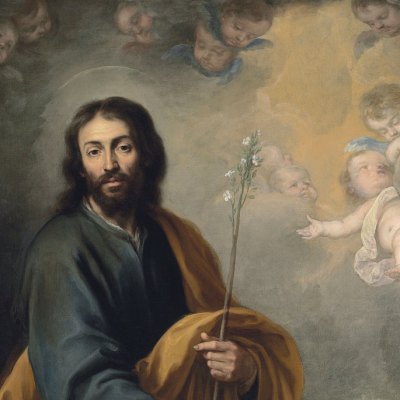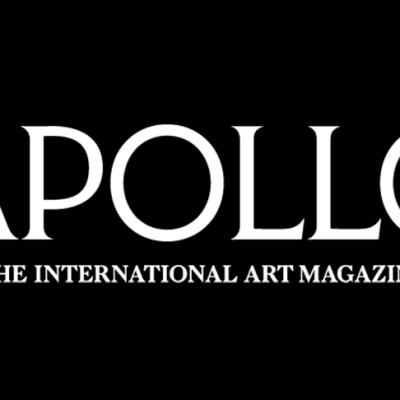What are the chances of two unrecorded caches of preparatory studies turning up for the same painting in the same sale? It seems even less likely when the finished work in question is a masterpiece. Yet Christie’s sale of Victorian, Pre-Raphaelite & British Impressionist Art on 14 December offers not only two oil sketches but also no less than 20 highly finished pencil drawings for Sir Edward Burne-Jones’s monumental The Golden Stairs (1880). The painting itself was acquired by the colourful Cyril Flower (later Lord Battersea), a patron of Whistler, on its exhibition at the Grosvenor Gallery in 1880. It was bequeathed to the Tate Gallery on Flower’s death in 1907, and formally presented in 1924.
The Golden Stairs 1880 by Sir Edward Coley Burne-Jones, Bt 1833-1898 (1880), Sir Edward Coley Burne-Jones

In 1872 Burne-Jones had returned reinvigorated from a trip to Italy, and launched into arguably the most productive phase of his career. One of the works he sketched out was The Golden Stairs. Further drawings for the composition were made in 1875, and as late as early 1880 he was asking his friend the artist George Howard to find him ‘a nice innocent damsel or two [to fill] the staircase picture.’ It was finished in great haste – not that you would know it – just days before the exhibition opened. As Lady Burne-Jones noted in her Memorials: ‘The picture is finished, and so is the painter almost.’ The critic F.G. Stephens hailed it as ‘beyond all question the painter’s masterpiece.’
There is no Pre-Raphaelite narrative here. The meaning is entirely ambiguous – Lady Burne-Jones recorded that ‘many were the letters he received from different parts of the world, asking for an “explanation”’. A group of ethereal young women in classical dress carrying viols, long trumpets, tambourines and flutes descend a staircase. As Stephens put it, the musicians ‘troop past like spirits in an enchanted dream…whither they go, who they are, there is nothing to tell.’ Burne-Jones has restricted his palette to tonal harmonies of whites, silver and gold, enhancing the rhythmic frieze-like aspect of the composition, while the staircase and the girls form a sinuous, serpentine line. It is an archetypal Aesthetic Movement expression of ‘Art for art’s sake’, an invocation of beauty designed to create a particular and poetic mood. Tate curator Alison Smith reads the painting as the artist’s attempt to convey the idea of ‘correspondence’ between painting and musical notation or metre in poetry.
Head study of Dorothy Dene looking downwards, for ‘The Golden Stairs’, by Sir Edward Coley Burne-Jones. © Christie’s Images Limited 2016

Burne-Jones was a compulsive draughtsman, often producing exhaustive studies for compositions years in gestation. For his figures, he would begin with professional models whom he would draw nude. Their heads, however, would often be likenesses of close friends or family. In The Golden Stairs, we find the likes of his daughter Margaret, May Morris, Frances Graham and Mary Gladstone. Another was believed to be the actress Edith Chester: two charming letters that accompany the oil sketches on sale here, however, reveal her to be the actress Dorothy Dene, the model for Lord Leighton’s famous Flaming June currently on loan to Leighton House Museum (until 2 April 2017).
The letters are from Matthew Webb, one of Burne-Jones’s studio assistants, and written to Frank Chapman, a Victorian cement entrepreneur. ‘I would rather not have sold separately the oil-painted heads in question, since they both relate to the same picture (a celebrated one) & reflect interest upon each other,’ he wrote in 1892. ‘The ¾ face has not the personal interest of the other (the portrait of a living actress sister-in-law of a distinguished artist) but of the two from the artist’s point of view I consider it myself the better painting.’ He continues: ‘If you wish for the head only of Dorothy Deane [sic], I must ask you for £5 for it.’ In the end, Chapman bought both for £7.10s.
Female head study, looking to the right, for ‘The Golden Stairs’, possibly Mary Stuart Wortley, later Countess Lovelace, by Sir Edward Coley Burne-Jones. © Christie’s Images Limited 2016

The sitter for the second head is believed to be the aspiring artist Mary Stuart Wortley, for whom Burne-Jones was both a mentor and friend. The sketches and accompanying letters are consigned to auction by Chapman’s great-grandfather. That of the bending figure of Dorothy Dene bears an estimate of £30,000–£50,000; the second head, £25,000–£35,000.
The drawings similarly come by direct descent from their original owners, Sir George and Lady Lewis: Elizabeth Lewis was a particular friend and confidant of Burne-Jones’s too. Previously bound in a sketchbook, these studies – some of which are double-sided – had been modestly framed in groups of two, three or five, and Christie’s is selling them thus. Only the full-length figure of Frances Graham – the daughter of his staunchest patron and the most important of the young women with whom he enjoyed sentimental but platonic relationships – is a singleton. It was only when Christie’s Harriet Drummond asked whether the original sketchbook survived that this drawing was laid onto its final page. Numbered and dated ‘XIV/1880’, it bears an evocative petrol blue colour test on its inside front – and, together with the drawing, an estimate of £10,000–£15,000.
These highly finished studies find Burne-Jones at this most Botticellian, and favouring a hard, silvery pencil to delineate the minute pleats of the Fortuny-like gowns that he had made as costumes. (Stephens, however, noted the artist’s debt to Piero della Francesca, whose frescoes in San Francesco in Arezzo the artist had copied in 1871.) They are concerned primarily with the hang, movement and twist of drapery in the body and sleeve, the breasts revealed under the diaphanous fabric. According to Drummond: ‘It is incredibly unusual to find so many drawings together.’
If that were not serendipity enough, the same sale also includes Burne-Jones’s portrait of Lady Lewis which failed to sell last year (£50,000–£70,000) – sadly not nearly as wonderful as the artist’s strikingly unusual portrait of her spirited daughter Katie (sold at Christie’s in 2000 for £267,750). As for the oil sketches and drawings, it would be wholly appropriate if they should find a home at Tate ahead of the gallery’s planned Burne-Jones retrospective in 2018.





